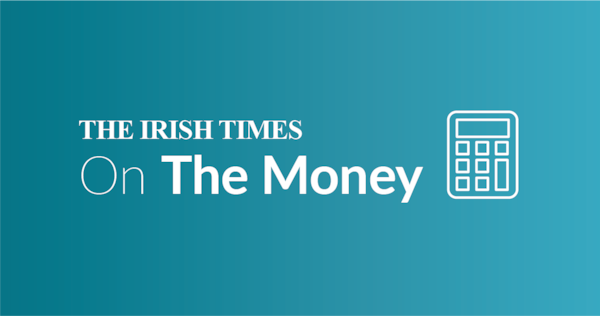The US-EU tariff deal was meant to bring certainty for exporters. But almost three weeks later there is a lot we don’t know – and more that remains uncertain.
A joint statement signed off by both sides had been expected shortly after the big summit in Scotland at the end of July, clarifying key parts of the deal and how it would be implemented. But this week, a European Commission spokesperson said, in best bureaucratese, that while further contacts with the US were expected on this, “I don’t believe at this stage we can put a timeline on these engagements.”
1. What is covered by the new tariffs?
The deal had been hailed as bringing “certainty” to Irish exporters. And it has done so, but only up to a point. A blanket 15 per cent tariff now applies on most categories or exports from Ireland to the US.
As ever with trade, there are tweaks. Some goods that had been subject to previous higher tariff charges (under the most favoured nation or MFN system) will still pay these. For Ireland, the main product affected here is butter – with Kerrygold now the second biggest seller on the US market.
READ MORE
Before Donald Trump came to office it had been levied at a rate based on weight – rather than the more usual percentage calculation. However, this worked out at somewhere over 16 per cent in practice. So this slightly higher rate will remain.
Other sectors face tariffs for the first time, or higher charges. For example, the large medical products sector had previously been largely exempt, but is now being levied at 15 per cent. So are parts of the food sector and spirits.
2. What is not covered?
US customs has published a list of goods that are excluded from the 15 per cent tariff and Carol Lynch, customs partner at BDO, says this is a good place for SMEs unsure if they are covered to check.
A key point for Ireland is that pharma products, by far the State’s biggest in value terms, are not currently subject to the 15 per cent tariff. This may change, as the Trump administration is undertaking a study of pharma supply into the US market and the national security issues that apply – the so-called section 232 investigation which refers back to a 1960s Act of congress. This is the backdrop to Trump’s talk of 150 per cent or 250 per cent tariffs on pharma in 18 months or two years’ time, applying to companies that do not play ball and return production to the US market.
The EU believes the US has signed up to a 15 per cent cap on pharma – and semiconductor – tariffs under the deal, but Trump’s subsequent statements suggest otherwise. This is why the absence of a joint statement between the EU and US is important.
3. What might change?
Another frustration for the EU is that the outline agreement suggested that more areas would be excluded from the 15 per cent tariff net but, beyond aircraft and aircraft parts, none of these has yet been spelt out.
These “carveouts” were due to cover some areas of food of potential interest to Ireland, some generic drugs and chemicals and perhaps medical devices, a sector that typically has lower margins and fixed-price contracts with US buyers.
The EU had also been pushing for a “zero for zero” tariff deal on wines and spirits, though the indications were the US was unlikely to concede this. So bar the list published by US Customs, we are no wiser on what other sectors may, in time, get a pass.
4. What can companies do?
The practical steps, according to Lynch of BDO, are, first, to check whether goods were in transit before August 7th, in which case the old 10 per cent rate would apply rather than the new 15 per cent. Companies need to know the tariff codes being used by those importing their products and whether any of the exclusions they know about so far apply.
And, she says, they need to examine whether they have any flexibility under the rules in terms of the value of goods declared for customs purposes. This is a complex area with detailed pricing rules applying but, particularly in high-value sectors such as pharma, companies may have options to readjust supply changes or pricing policies to cut their tariff bills.
5. Where next on pharma?
The Trump administration has been promising the results of its section 232 investigation shortly, expected by way of a big report. Alongside this, Trump’s team have been negotiating on prices with the big US pharma companies, demanding that they charge the same prices in the US as other countries. A 2022 study showed that US prices were, on average, three times higher than the OECD average. This – in Trump’s view- means prices should fall in the US and rise in other countries, thus giving the US consumer a better deal while giving companies ongoing revenue to fund research.
It is unclear what the outcome of this will be but the two areas are linked. Imposing tariffs on imports risks increasing prices on the US market, the opposite of the goal of the price negotiations. The US president is threatening tariffs that would gradually increase over time as a way of getting Big Pharma to relocate more production to the US of key drugs and ingredients. So will we see 15 per cent pharma tariffs when the result of the section 232 inquiries are out? Or will the US president hold off for now while holding out the threat of tariffs if Big Pharma does not fall into line on prices and investment?
6. Ireland’s pharma exposure
In a post on the pharma issue on LinkedIn, Ben McConkey, an Irish MSc student at the London School of Economics, underlines the extent of Ireland’s “pharma” exposure by pointing out that the US imported more than $50 billion worth of Irish pharmaceutical products in 2024, making it the single largest category of goods imported from any EU country by a margin of $15 billion and representing 8.3 per cent of all US imports from the EU.
While the noise around the trade talks was about German cars, Irish pharma exports have a higher value, though this is of course hugely inflated by the pricing practices of the firms involved, which have a financial incentive to declare as much profit as possible in low-tax Ireland. This contributes to Ireland’s huge trade surplus with the US – and keeps us in Trump’s sights.
McConkey also makes the interesting point that the bulk of Irish pharma and organic chemicals go to Indiana – home of Eli Lilly – as well as Puerto Rico, North Carolina and Illinois. Many are not finished drugs but are high-value ingredients in drugs then sold across the US. As tariffs will have an economic impact on these companies – and on US consumers – it remains to be seen what the president decides. But the stakes for Ireland in the section 232 process are huge, as it could influence both future manufacturing investment and the transfer-pricing structures the companies employ, which have led to huge profits being declared in Ireland and a lot of corporate tax being paid here.
7. The uncertainty may just roll on
The EU’s belief was that a joint statement would be agreed with the US on the basis of the political agreement between Trump and European Commission president Ursula von der Leyen in Scotland. This would then be followed by further detailed negotiations. It is unclear if the absence of even a basic, joint written understanding is a result of August holidays or whether it is a sign of the way the US president tends to operate – in headlines and in a way that leaves him with maximum flexibility to change tack. The president and his team have been continuing to push the boat out in terms of tariffs and pressure on US businesses to bend to their will.
There is a fair chance the uncertainty will roll on – and on. This in itself will have a cost on businesses, even if the 15 per cent deal has left many feeling they have some more solid ground on which to plan. And, it must be remembered that the US president’s right to impose the 15 per cent tariffs at all is being challenged in the courts – a process likely to go right to the US supreme court for an ultimate decision.













